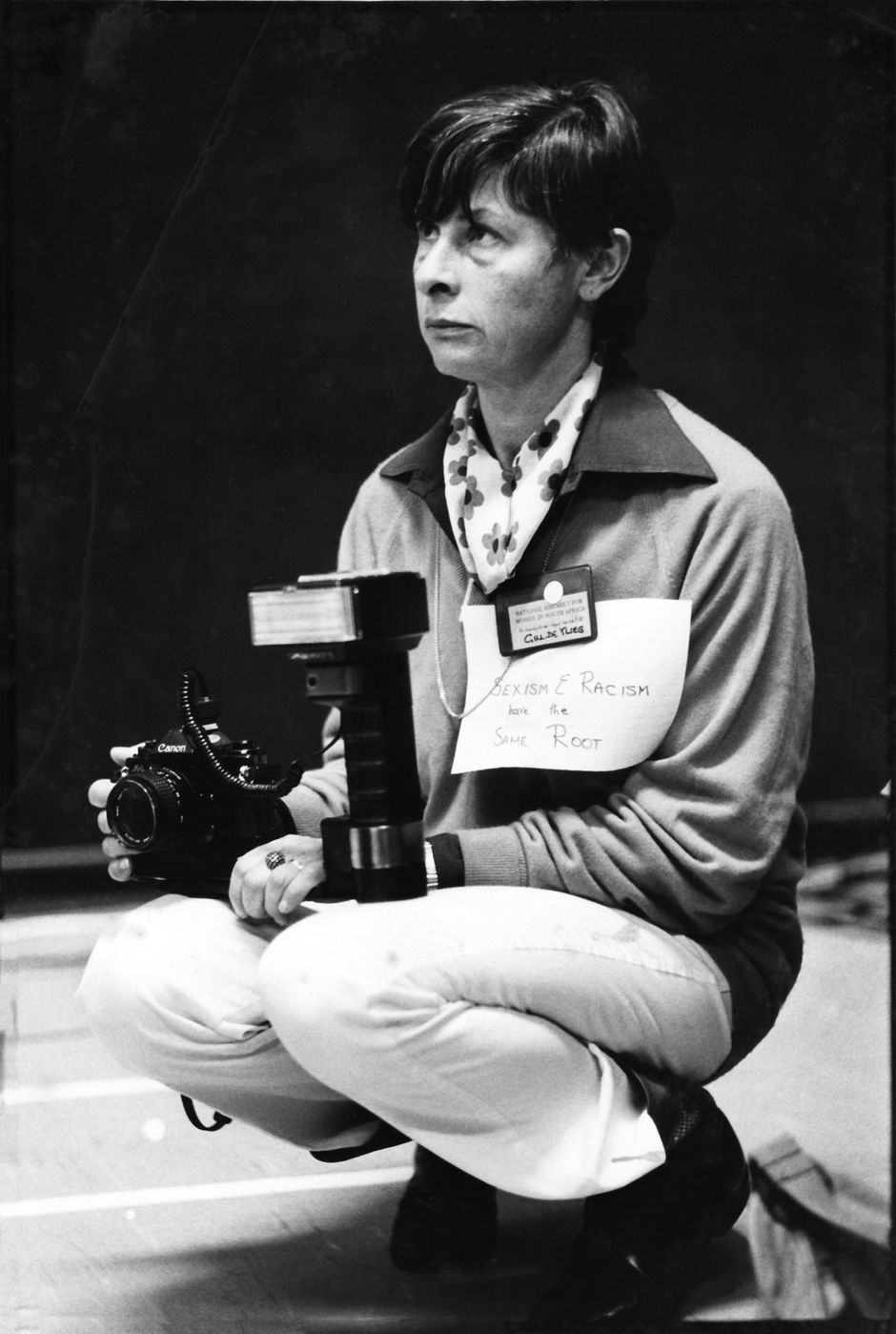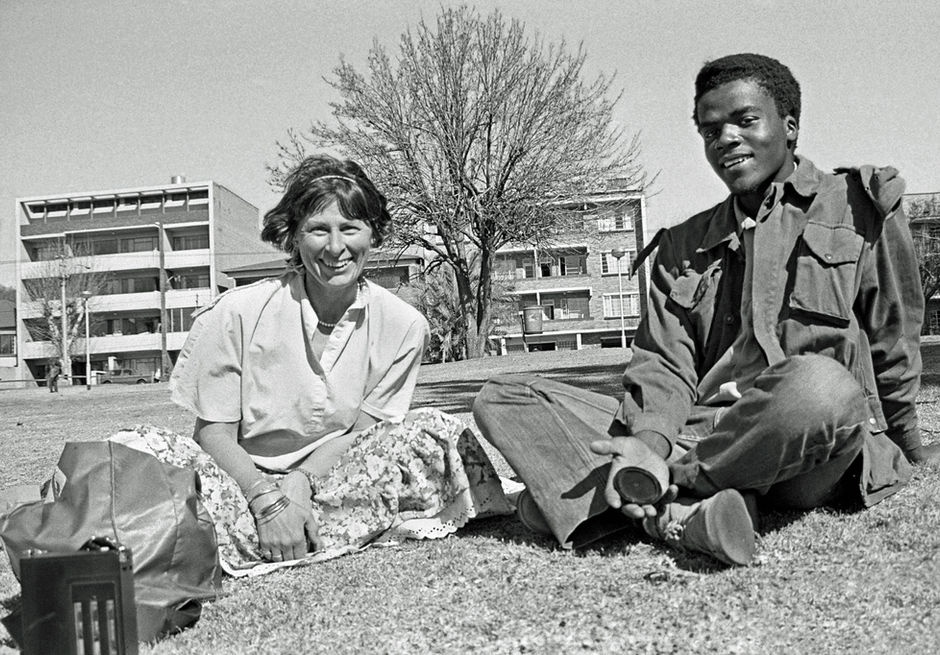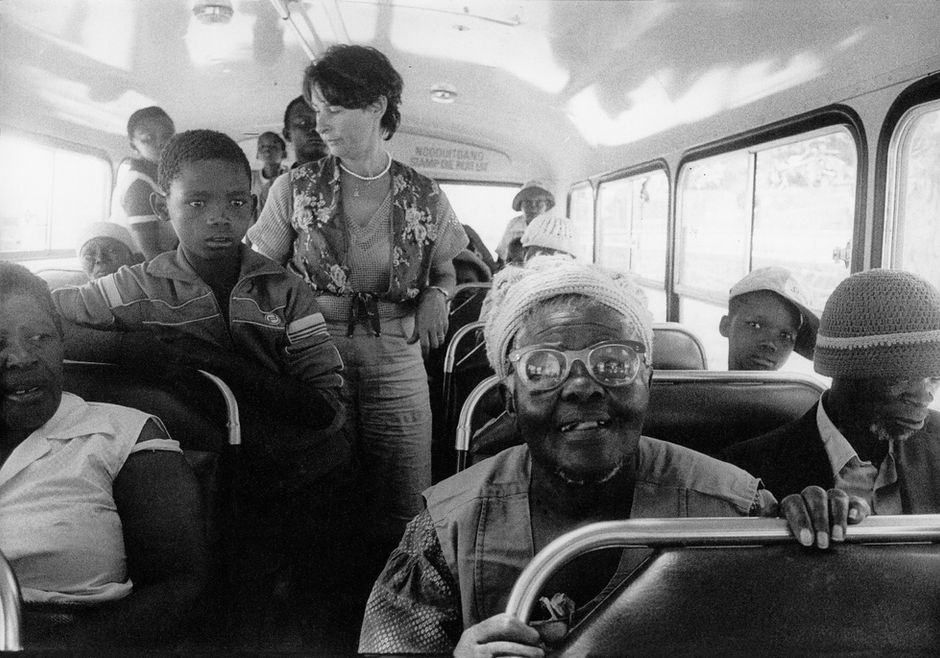top of page

AN EYE FOR FREEDOM
PHOTOGRAPHS
BY GILLE DE VLIEG

In 1982, Gille de Vlieg became a member of the anti-apartheid women’s organization, the Black Sash, in Johannesburg.
She participated in, and photographed, Black Sash protest ‘stands’, which entailed standing in public places holding signs and posters opposing the apartheid state, and she participated in campaigns against forced removals.
During the course of her activist work, de Vlieg took photographs to record what she saw, and to serve as evidence of the effects of violence to which she was witness.



In 1984, Paul Weinberg, documentary photographer and co-founder of the Afrapix photography collective, invited de Vlieg to join the organization. Her photographs were included in books and exhibitions and formed part of the weekly packages Afrapix sent overseas to draw attention to the struggle against apartheid.

As well as being active within Black Sash, de Vlieg was invited into Tembisa, Ekurhuleni, by Greg Thulare, the Congress of South African Students’ (COSAS) Tembisa organiser, in August 1984. This gave her insight into the political and social lives of activists and other members of this community.
It was in Tembisa that she met Debora Marakalala, an anti-apartheid activist.
Debora describes Gille as an ‘adopted daughter of Tembisa’.
In the videos that follow, Debora speaks about her life as an activist in the 1980s and reflects on several photographs made by Gille, including photographs of her mother, trade unionist, Rosina Marakalala.
In the videos below, Debora speaks about life in Tembisa during a time of intense repression, and about her experiences in detention.
Debora recalls how ANC leader O.R Tambo termed Tembisa 'a liberation zone'.
In the interview above, Gille and Debora speak about the mass detentions that took place in July 1985, just after the funeral of the Cradock Four, Matthew Goniwe, Fort Calata, Sparrow Mkonto and Sicelo Mhlauli, anti-apartheid activists who were assassinated by the Security Police. A State of Emergency was declared, and Debora was among those arrested and detained on returning from the funeral, first at John Vorster Square and later in Johannesburg Prison.
In the interview below, Debora relates how she was arrested again in Tembisa in 1987. She was pregnant at the time and as a result of the torture she endured, she suffered a miscarriage in detention.
In 1987, when Debora was arrested and detained again, Gille took care of her three-year-old daughter, Lerato.
Between 1963 and the end of apartheid in 1994, approximately 80,000 people were detained by the police and held in police stations and prisons without being tried.
During the 1980s repression increased and between 1984 and 1988, approximately 50,000 people were detained. Among those targeted for detention without trial were school students, teachers, poets, journalists, health-care workers, lawyers and trade-unionists.
Hundreds of anti-apartheid activists went missing after being detained by the Security Police, and in many cases their whereabouts remain unknown.

In the interviews above, Debora relates how the apartheid state sought to charge activists with terrorism and how the Security Police tried to break the spirits of those they detained. She speaks of how psychological torture remains with you for your whole life.
Reflecting on the struggle not only for justice, but for peace in the aftermath of apartheid, she asks: "How can you reconcile when no truth has been told?"

At the hearings of the Truth and Reconciliation Commission (TRC), the Human Rights Committee reported that in addition to the thousands of adults who were detained and tortured, approximately 20 000 children were detained without trial, and as many as one in four children were tortured in detention.
In 1986 Gille de Vlieg co-ordinated the Free the Children campaign, which worked to draw attention to the plight of children in detention and to call for their release.


On the 12th of June 1986 Gille de Vlieg was arrested by the Security Police after a raid on her house in Johannesburg.
She was held at the Hillbrow police station, where she remained in isolation for thirty-seven days during the State of Emergency.
She was also arrested for brief periods on other occasions in the 1980s.

After her release from detention, de Vlieg continued to take photographs and documented forced removals, life in rural areas and townships, the emergence of the United Democratic Front (UDF), anti-harassment campaigns, police violence, protests against the death penalty, funerals, Black Sash events and protests, protests against incorporation into Bophuthatswana, the Release Mandela Campaign, the End Conscription Campaign (ECC) and conscientious objectors, and the African National Congress (ANC) Welcome Home Rallies.
Her work casts light on women's activism and on both ordinary and extraordinary forms of resistance to apartheid.
Many of her photographs show women performing the essential work required to sustain and nurture life under harsh conditions.
In her words, her photographs show "women doing work on the ground, the groundwork that makes change possible".
bottom of page






































